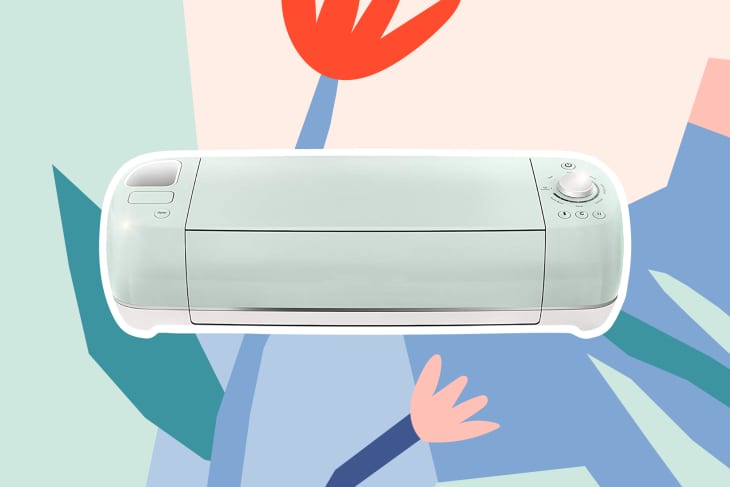What Everyone Gets Wrong About Cricut Cutting Machines

When you’re an occasional crafter (i.e. not quite ready to star on a show like “Making It“), a cutting machine is a big investment—the newest Cricut retails for $399! But the allure of these machines is real.
With a cutting machine like the Cricut or the Silhouette Cameo, you can precisely cut through most materials (even leather and thin wood!), tackle simple sewing projects, draw intricate designs, make complex stencils, and create elaborate logos for apparel. Basically, you’re ready to take on any crafting DIY.
Still, there’s a misconception that these machines are too complex for the average maker—that you need a special skill set just to operate them and that the maintenance of such a machine isn’t worth the effort for occasional use. But we’re here to debunk the five biggest myths about cutting machines, plus offer simple hacks to help you get the most out of your Cricut or Silhouette.
Myth #1: You have to buy special pens.
You could shell out extra money on branded pens manufactured specifically for your cutting machine… or you could use a pen or a marker you already have on hand. You can buy a simple adapter that allows you to use any writing utensil—Crayola markers, Sharpie fine point pens and markers, or gel or ballpoint pens—up to ½ inch in diameter. Prefer the DIY route? (Of course you do!) Check out this tutorial to make your own adapter with two simple crafting supplies.
Myth #2: You are limited to the fonts and graphics in the included software.
When it comes to using your cutting machine, this is one of the best ways to save money. Cricut Design Space has thousands of fonts, images, and ready-to-make projects, and if you’re looking for convenience, it’s the way to go. But a large portion of the designs cost money. You can upload your own fonts and images into Cricut’s software, but using premade SVG files—Scalable Vector Graphics, basically a fancy acronym for cut files—is much easier if you’re just starting out. Check sites like Creative Market, Love SVG, and SVG and Me for free files.
Myth #3: Mats don’t last long.
Like anything else, your cutting mats just need a little TLC. Keep the plastic film on your mat when not in use to prevent pet hair and lint from sticking to it. And be sure to clean your mat after each use. A lint roller can help remove stubborn particles, like glitter or thread. You can also use a non-alcoholic baby wipe. Simply rub in a circular motion, then let air dry before replacing the plastic covering.
Myth #4: Vinyl is expensive.
Ok, technically vinyl is expensive. But it doesn’t have to be! Instead of brand name vinyl, use colored or decorative contact paper, which is readily available at craft stores and is a lot less expensive. Similarly, Glad Press’n Seal is sold in just about any grocery store and is a less expensive substitute for transfer paper.
Myth #5: Weeding is hard.
We’re not talking about the kind of weeding you do in your garden. When you pick out the unnecessary pieces of paper, vinyl, or fabric from your cut designs, it’s also called weeding. Depending on the intricacy of your creation and the font you choose, weeding can be tedious—but it doesn’t have to be challenging. Use a light box, an iPad, or another bright surface to uplight your design. A lint roller also works wonders if you’re weeding small pieces from paper crafts. (Don’t try this on vinyl: You risk pulling up your entire design.)